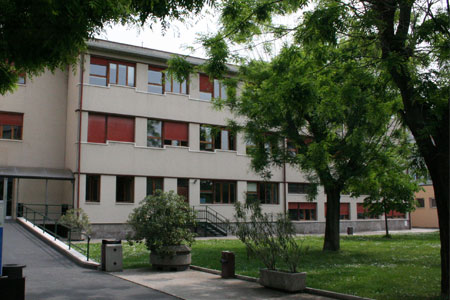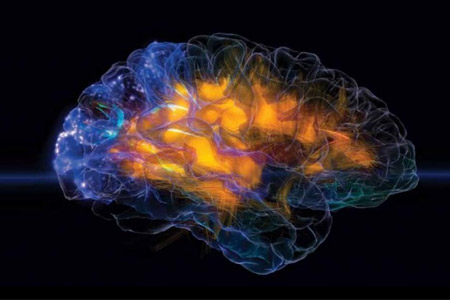- Autori:
-
Nuovo, Sara; Micalizzi, Alessia; Romaniello, Romina; Arrigoni, Filippo; Ginevrino, Monia; Casella, Antonella; Serpieri, Valentina; D'Arrigo, Stefano; Briguglio, Marilena; Salerno, Grazia Gabriella; Rossato, Sara; Sartori, Stefano; Leuzzi, Vincenzo; Battini, Roberta; Ben-Zeev, Bruria; Graziano, Claudio; Mirabelli Badenier, Marisol; Brankovic, Vesna; Nardocci, Nardo; Spiegel, Ronen; Petković Ramadža, Danijela; Vento, Giovanni; Marti, Itxaso; Simonati, Alessandro; Dipresa, Savina; Freri, Elena; Mazza, Tommaso; Bassi, Maria Teresa; Bosco, Luca; Travaglini, Lorena; Zanni, Ginevra; Bertini, Enrico Silvio; Vanacore, Nicola; Borgatti, Renato; Valente, Enza Maria
- Titolo:
-
Refining the mutational spectrum and gene–phenotype correlates in pontocerebellar hypoplasia: results of a multicentric study
- Anno:
-
2022
- Tipologia prodotto:
-
Articolo in Rivista
- Tipologia ANVUR:
- Articolo su rivista
- Lingua:
-
Inglese
- Formato:
-
Elettronico
- Referee:
-
Sì
- Nome rivista:
- Medical Genetics
- ISSN Rivista:
- 0022-2593
- N° Volume:
-
59
- Numero o Fascicolo:
-
4
- Intervallo pagine:
-
399-409
- Parole chiave:
-
neonatal diseases and abnormalities; cerebellar diseases; congenital; genetics; genotype; hereditary; medical; phenotype
- Breve descrizione dei contenuti:
- Background: Pontocerebellar hypoplasias (PCH) comprise a group of genetically heterogeneous disorders characterised by concurrent hypoplasia of the pons and the cerebellum and variable clinical and imaging features. The current classification includes 13 subtypes, with ~20 known causative genes. Attempts have been made to delineate the phenotypic spectrum associated to specific PCH genes, yet clinical and neuroradiological features are not consistent across studies, making it difficult to define gene-specific outcomes. Methods: We performed deep clinical and imaging phenotyping in 56 probands with a neuroradiological diagnosis of PCH, who underwent NGS-based panel sequencing of PCH genes and MLPA for CASK rearrangements. Next, we conducted a phenotype-based unsupervised hierarchical cluster analysis to investigate associations between genes and specific phenotypic clusters. Results: A genetic diagnosis was obtained in 43 probands (77%). The most common causative gene was CASK, which accounted for nearly half cases (45%) and was mutated in females and occasionally in males. The European founder mutation p.Ala307Ser in TSEN54 and pathogenic variants in EXOSC3 accounted for 18% and 9% of cases, respectively. VLDLR, TOE1 and RARS2 were mutated in single patients. We were able to confirm only few previously reported associations, including jitteriness and clonus with TSEN54 and lower motor neuron signs with EXOSC3. When considering multiple features simultaneously, a clear association with a phenotypic cluster only emerged for EXOSC3. Conclusion: CASK represents the major PCH causative gene in Italy. Phenotypic variability associated with the most common genetic causes of PCH is wider than previously thought, with marked overlap between CASK and TSEN54-associated disorders.
- Pagina Web:
-
https://doi.org/10.1136/jmedgenet-2020-107497
- Id prodotto:
-
121353
- Handle IRIS:
-
11562/1044699
- ultima modifica:
-
15 novembre 2022
- Citazione bibliografica:
-
Nuovo, Sara; Micalizzi, Alessia; Romaniello, Romina; Arrigoni, Filippo; Ginevrino, Monia; Casella, Antonella; Serpieri, Valentina; D'Arrigo, Stefano; Briguglio, Marilena; Salerno, Grazia Gabriella; Rossato, Sara; Sartori, Stefano; Leuzzi, Vincenzo; Battini, Roberta; Ben-Zeev, Bruria; Graziano, Claudio; Mirabelli Badenier, Marisol; Brankovic, Vesna; Nardocci, Nardo; Spiegel, Ronen; Petković Ramadža, Danijela; Vento, Giovanni; Marti, Itxaso; Simonati, Alessandro; Dipresa, Savina; Freri, Elena; Mazza, Tommaso; Bassi, Maria Teresa; Bosco, Luca; Travaglini, Lorena; Zanni, Ginevra; Bertini, Enrico Silvio; Vanacore, Nicola; Borgatti, Renato; Valente, Enza Maria,
Refining the mutational spectrum and gene–phenotype correlates in pontocerebellar hypoplasia: results of a multicentric study
«Medical Genetics»
, vol.
59
, n.
4
,
2022
,
pp. 399-409
Consulta la scheda completa presente nel
repository istituzionale della Ricerca di Ateneo 








